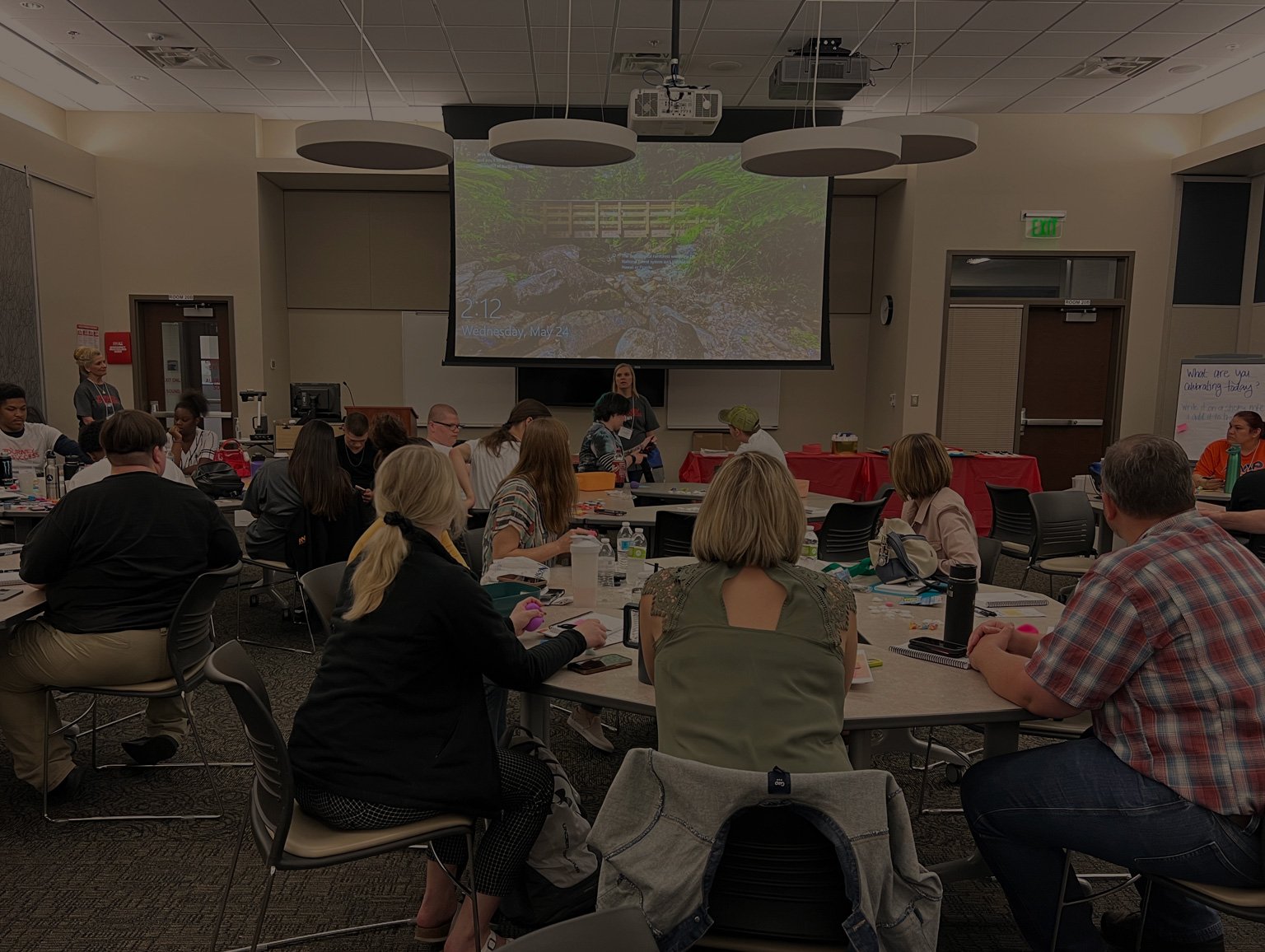A behind-the-scenes playbook to guide foster care advocacy on Capitol Hill
Part 2:
Congressional Offices and committees / Personnel Is Policy
THE SHORT VERSION: Realistically, lawmakers cannot be experts on every issue important to their state or district, so they hire congressional aides — also known as “staffers.” Understanding how to connect with and build relationships with these influential staffers is key to effective advocacy. Ready to learn more? Let’s dive in…
The Basics
There are three types of offices made up of congressional aides. Every member of Congress generally lists all of their office locations on their website.
Personal Offices
Every elected member of Congress has a personal office on Capitol Hill in Washington, D.C., where they respond to concerns from their constituents (the people they represent) and handle issues that come before Congress.
Depending on seniority and congressional body (House vs. Senate), these offices range in size, from small offices with just a few staff to larger offices with dozens of staff.
FOSTER CARE ADVOCACY SPOTLIGHT:
A member’s personal office is directly responsible for addressing constituent concerns. It’s an ideal venue to hear from youth with lived experience in the foster care system to share their stories. Advocates should connect with personal office staff to describe their vision on how to improve child welfare and ideas on how to advance ideas on promoting permanency, health and wellness and other key priorities.
District Offices
Every elected member of Congress has at least one office located in their state or congressional district. These field offices conduct a wide range of “casework.” This means they solve problems for constituents, often involving coordination with federal agencies.
District offices also liaise with local and community organizations and manage members’ travel within their state or district.
FOSTER CARE ADVOCACY SPOTLIGHT:
Members spend about one week per month and the entire month of August in their state or district, often conducting town hall meetings. Advocates can explore opportunities to work with the district staff on events that highlight the need for child welfare reform such as a site visit, a briefing by youth with lived experience, or a “field hearing” on issues specific to the state or district.
Committee Offices
The vast majority of work that Congress undertakes on a daily basis occurs in a committee. There are dozens of committees in the Senate and House. This includes full committees and subcommittees.
Here is a full list of Congressional committees. At the start of each Congress, every member of Congress is given committee assignments, generally determined by their party leadership. These committee assignments determine the focus of their work throughout the year and involve committee briefings, hearings, markups, and more. Authorizing committees have jurisdiction over all federal programs and policies. These committees have a great deal of responsibility to oversee existing programs and to update and improve policies and programs as needed.
FOSTER CARE ADVOCACY SPOTLIGHT:
The Senate Finance Committee and the House Ways and Means Committee have jurisdiction over child welfare and foster care policies affecting Transitional Age Youth (TAY). These committees are where the rubber meets the road. Staff on these committees are considered ‘minority’ or ‘majority’ staffers depending on which committee leader they work for: the chair (majority) or the ranking member (minority). Committee staffers are essential to moving TAY policies forward as their particular focus areas and decisions influence policy agendas. These staffers are responsible for staying up-to-date on major developments in the field and monitor reports and data issued by the HHS Administration of Children and Families and related agencies that serve TAY, including Medicaid as well as education and workforce agencies. These staffers spend a great deal of time meeting with congressional aides from the member offices represented on the committee and also work with congressional aides from the other body. Because these staffers have a great deal of responsibility and work in a fast-paced environment, they appreciate meetings that get right to the point and share new information or a new point of view.

HOW IT WORKS
Personal offices typically have a chief of staff (CoS) to serve as the top advisor to the member of Congress; a legislative director (LD) to coordinate and manage policy; a press team that handles everything from social media to inquiries from investigative journalists; schedulers that manage appointments, committee schedules, floor votes, travel and more; staff assistants to take constituent phone calls; and legislative correspondents to answer constituent mail.
The legislative director usually oversees a team of legislative assistants (LAs). Each LA is responsible for a portfolio of issue areas such as health, defense, foreign policy, taxes, or children’s issues. Ongoing engagement with the personal office LA who is responsible for child welfare and foster care issues is necessary to ensure that members of Congress are informed and taking action on issues critical to TAY.
District offices generally have a state director and constituent services staff. District office staff rarely manage federal policy, but because the member of Congress is “at home” in the district on a regular basis, district staff can be great assets in planning events that highlight issues important to TAY.
Each congressional committee has a chair from the majority party and a ranking member from the minority party. The chair and ranking member each hire a staff director, support staff, and professional staff with specific policy expertise. These positions are highly specialized. Titles include professional staff, policy advisor, or counsel. Professional staffers work with the chair and ranking member to set the agenda for the committee. No legislative work on TAY issues gets done without them!
take action!
There a several steps you can take to engage with congressional staff:
Learn more about your congressional delegation.
Each state has two senators and anywhere from one to dozens of representatives. Get acquainted with your Congressional delegation, learn what committees they are working on, and get to know the relevant staffers. Each member of Congress has a website that highlights their top focus areas. Sign up for email alerts from your congressional delegation — it’s a great way to learn what they are up to and how, when, and where you can advocate. When you see a policy that is relevant to TAY, call the office and ask to speak to the LA who handles child welfare and share your support or concerns. Most members of Congress are also active on social media, with some who make dozens of posts a day! See here for a list of Twitter handles. Many advocacy campaigns like Journey to Success leverage social media to raise awareness of issues with members of Congress. Follow us @journeycampaign.
Pay attention to when your member of Congress is back in your state or district.
Show up for their town hall meetings. Members hold these events to hear directly from constituents and often take concerns raised during these forums back to Washington, D.C. Follow up with the local staff, and don’t be afraid to reach back out to the D.C. staff to let them know you raised TAY issues with their boss.
Write letters to the editor of your local papers.
Each morning, members of Congress will have their press teams compile key stories from local papers in their state or district. Lawmakers often read these articles before reading national newspapers.
Find out if any member of your congressional delegation serves on the Senate Finance Committee or the House Committee on Ways and Means.
These members are in a great position to advance policies that improve outcomes for TAY.
Here at Insider’s Guide, we are all about the snacks! Members of Congress are allowed to offer regional treats in the personal offices.
The next time you’re in D.C., pop your head in for some Florida orange juice, Iowa popcorn, and Pennsylvania Hershey’s chocolate!
Personal offices and committee offices share space in six main congressional office buildings.
On the House side, these buildings are named after prominent congressmen: Cannon, Longworth, and Rayburn. On the Senate side, these buildings are named after prominent senators: Russell, Dirksen, and Hart. The U.S. Capitol campus has a rich history. The Architect of the Capitol is responsible for maintaining these historic and important buildings. History buffs might be interested in reading more about these historic treasures.
The House and Senate office buildings are connected by underground tunnels.
One can walk from the Russell building to the Rayburn building without going outside!
The Senate Finance Committee is in the Dirksen Senate Office Building.
Even though Finance is one of the most important committees given its responsibility over the U.S. tax code, trade agreements, Medicare, Medicaid, child welfare and Social Security (to name a few), the office space where it conducts its business is relatively small. Finance lore is that then-Chairman Russell Long designed it that way because the business before the committee was so personal, he wanted to see the faces of everyone in the room.

THE BOTTOM LINE
It takes a village to get things done on Capitol Hill. Now that you understand the company our lawmakers keep, you are in a better position to work effectively with congressional staff to secure policy wins for youth in foster care.









